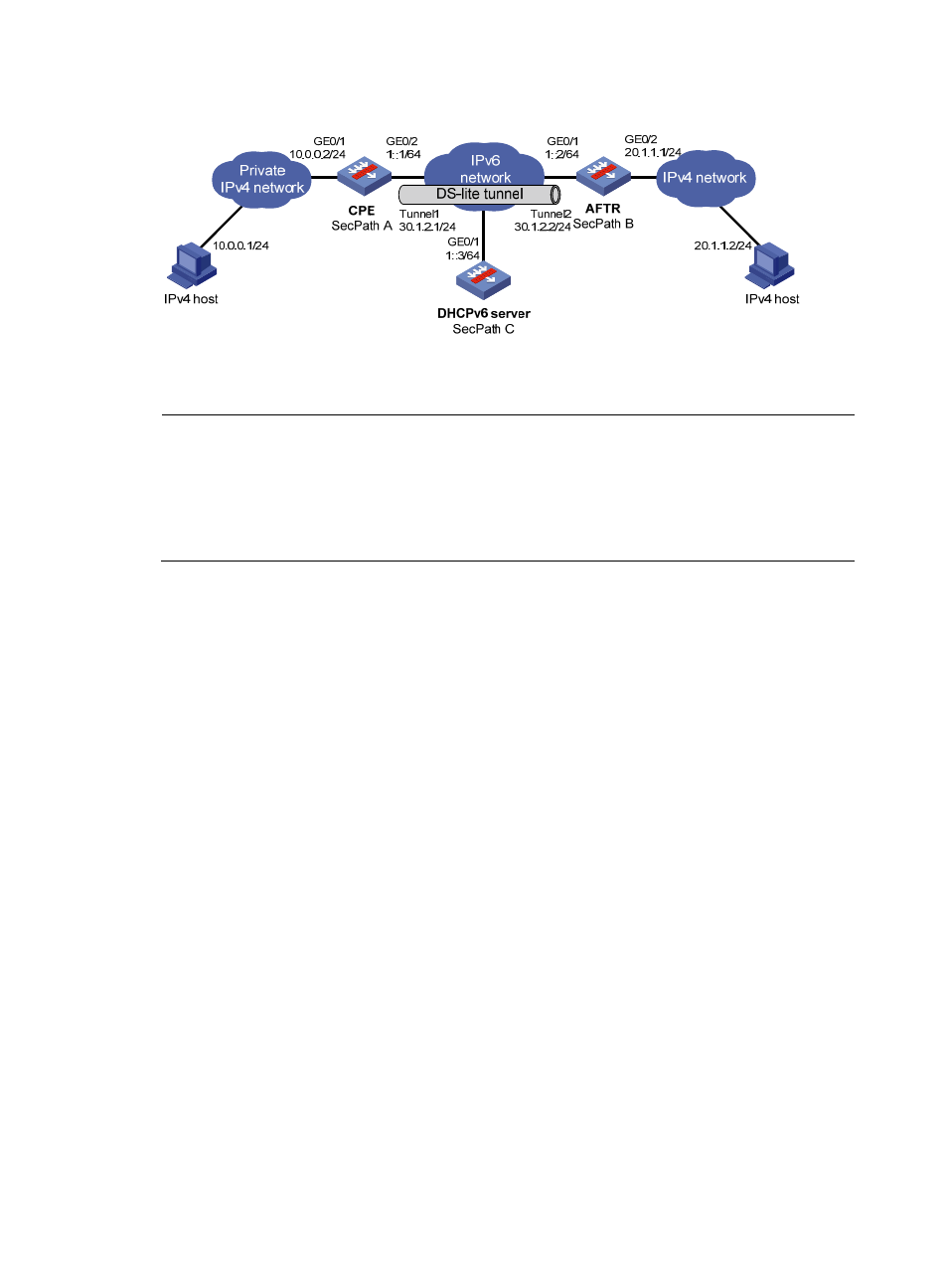Configuration procedure – H3C Technologies H3C SecPath F1000-E User Manual
Page 124

112
Figure 78 Network diagram
Configuration procedure
NOTE:
•
Before configuring a DS-Lite tunnel, make sure that SecPath A and SecPath B are reachable to each
other.
•
In this example, SecPath A and SecPath C are in the same network segment. Otherwise, you must deploy
a DHCPv6 relay agent between them. DHCPv6 relay agent is beyond the scope of this document. For
more information about DHCPv6, see
Network Management Configuration Guide.
•
Configure SecPath A (the CPE):
# Enable IPv6.
[SecPathA] ipv6
# Configure an IPv4 address for interface GigabitEthernet 0/1.
[SecPathA] interface GigabitEthernet 0/1
[SecPathA-GigabitEthernet0/1] ip address 10.0.0.2 255.255.255.0
[SecPathA-GigabitEthernet0/1] quit
# Configure an IPv6 address for interface GigabitEthernet 0/2 (the physical interface of the
tunnel).
[SecPathA] interface GigabitEthernet 0/2
[SecPathA-GigabitEthernet0/2] ipv6 address 1::1 64
[SecPathA-GigabitEthernet0/2] quit
# Create interface Tunnel 1.
[SecPathA] interface tunnel 1
# Configure an IPv4 address for interface Tunnel 1.
[SecPathA-Tunnel1] ip address 30.1.2.1 255.255.255.0
# Specify the tunnel encapsulation mode.
[SecPathA-Tunnel1] tunnel-protocol ipv4-ipv6 dslite-cpe
# Configure a source interface for Tunnel 1
[SecPathA-Tunnel1] source GigabitEthernet 0/2
[SecPathA-Tunnel1] quit
# Configure a static route to the public IPv4 network.
[SecPathA] ip route-static 20.1.1.0 255.255.255.0 tunnel 1
•
Configure SecPath B (the AFTR):
- H3C SecPath F5000-A5 Firewall H3C SecPath F1000-A-EI H3C SecPath F1000-E-SI H3C SecPath F1000-S-AI H3C SecPath F5000-S Firewall H3C SecPath F5000-C Firewall H3C SecPath F100-C-SI H3C SecPath F1000-C-SI H3C SecPath F100-A-SI H3C SecBlade FW Cards H3C SecBlade FW Enhanced Cards H3C SecPath U200-A U200-M U200-S H3C SecPath U200-CA U200-CM U200-CS
